How To Repair Fallen Arches
Get total access to Outside Learn, our online pedagogy hub featuring in-depth fettle, diet, and run a risk courses and more ii,000 instructional videos when you sign up for Outside+.
Our bodies are a bit like buildings: the physical structure is constantly resisting gravity. Now, imagine a skyscraper with a complanate foundation—it's non just the ground floors that are compromised: the entire compages is at stake. Our anxiety and ankles are our foundation, and weaknesses hither tin lead to a host of issues elsewhere. Fallen arches—also known equally overpronation—are a common source of local foot and ankle problems and tin atomic number 82 to issues further upstream, in the knees, hips, and spine.
Fixing Overpronation Is An Inside Job
Overpronation happens when the vertical, curved shape of our natural pes arch collapses while weight begetting. The structure of the hips naturally inclines the body to collapsed arches: the femur bones bending inward, from a wide pelvis to a more narrow base of back up at the feet, exposing our bodies to forces that we have to combat with postural strength. Additionally, genetics, muscle and connective tissue weakness, alignment, and gait mechanics can all atomic number 82 to fallen arches. Symptoms vary simply include obvious hurting, tendinitis, and numbness at the foot and talocrural joint as well as more than sneaky complaints upwardly the kinetic chain like articulatio genus and hip pain.
Typically, overpronation goes manus-in-hand with excessive internal rotation of the femurs, which y'all tin can run across in the video below. You can bank check out your alignment by referencing a couple of anatomical landmarks: the vertical tendons of the hamstring muscles behind your knees and the achilles tendons backside your ankles. These should be oriented directly back. With excessive internal rotation, you might meet them angled slightly outward.
One mutual solution to overpronation is supportive shoe insoles, which fill the space of the curvation and physically forestall it from collapsing. But that doesn't accost why the curvation is falling in the showtime place. The hip muscles, specifically the external rotators, sit under the glute muscles and assist reinforce the neutral position of the femurs and lower legs. Activating and strengthening these muscles supports good alignment through the lower torso and can help naturally lift and back up the arches. Over time, the man torso'south intrinsic chapters to self-repair weak musculus, nerves, and connective tissue (including bone, ligaments, tendons, and fascia) allows us to make lasting changes to our structure. The below exercises will help you place and maintain alignment through consistent strengthening and mobility work.
The Moves
Deep Hip External Rotator Activation: The Fingertip Elevator
What it does: Engages the external hip rotators to align the anatomical landmarks we identified higher up and lift the arches. Helps build forcefulness, elasticity, and resilience in the feet and ankles, knees, and hips.
How to do it: Stand barefoot and imagine that you accept ii flat discs nether both of your feet. Engage the deep hip rotators by 'spinning the discs' without moving your feet. This will feel like a gentle twist of your left hip counterclockwise and your right hip clockwise. Your femurs should spin open into external rotation. Relax your quads—the effort should exist coming from your hips. Maintain even pressure through the toes and the assurance of your anxiety.
Your foot position should remain static except for a noticeable lift of the curvation, enough to allow you to tuck your fingertips underneath your arch close to the front of your heel. Only go far plenty to orient those tendon landmarks in their ideal position—otherwise, you can overcorrect into supination, putting excessive weight on the outside of the foot and lifting off of the big toes. You may desire the help of a mirror or a friend at kickoff.
Book: Do three to five repetitions of activating and relaxing. Perform this alignment several times per day, or whenever you notice yourself standing.
The following moves are function of the Ground Force serial from Samsara Experience, where I work as a coach. They will assist your body maintain the above structural alignments, and strengthen your human foot and ankle complex all the way upwards to your hips, building a solid foundation for movement. Ditch your shoes for these exercises to go acquainted with muscles and connections in your feet and legs that you may take never felt before.
Foot Activation
What information technology does: Repairs the neuromuscular circuits from anxiety to brain, by activating fallow muscles of the foot and ankle.
How to practise it: Stand up barefoot with a corrected curvation position. And then, activate the muscles of both feet by gripping the basis with your toes. It should experience like a quick snap that elevates your heels most a half-inch and brings yous into an active forefoot stance. Proceed your knees straight and soft, and avoid performing a calf enhance—this should all originate with the anxiety. The gripping action should engage the achilles tendons, the calf muscles, the hamstrings, and the glutes. If you're having a hard time performing this move, endeavor placing a flat canvas of paper under your feet and attempting to scrunch it.
Volume: Perform one to three sets of five to fifteen repetitions. Perform this move oft throughout the week.
Single Leg Forefoot Isometric Concur
What it does: Rebuilds the connective tissues of the foot and ankle, strengthens muscles from feet to torso.
How to practice it: Stand up on one leg, shift your weight into your forefoot, curl your toes to grip the ground, and so lift your heel. Hold for 30 to xl seconds. Use your complimentary fingertips confronting a wall for remainder if needed. Y'all should experience the work in your feet, achilles tendons, calf muscles, and thighs. Your priority here is to keep your arch and your hips stable. Start with bodyweight, and add load in the grade of a dumbbell or kettlebell if information technology feels also easy. If you opt to utilise weight, hold information technology in the same hand as the standing leg. Stop if you lot have whatsoever pain.
Volume: Perform one to three 30- to forty-second holds, resting for 2 minutes in between. Repeat two to four days a week.
Double-Leg Hop in Basis Force Foot Position
What it does: Promotes bone health, elasticity, and appropriate foot and ankle stiffness.
How to do information technology: Assume your active forefoot position with corrected arches. Stiffen your ankle articulation, property it firm, close to a right angle, and begin hopping with low aamplitude. In this motion you are attempting to railroad train your feet and legs to endure quick dynamic forces in the active forefoot position and so that you tin can better perform fast movements like running and bounding without overpronation. You lot also may begin to experience the springiness of your plantar fascia and achilles tendons that allows united states of america to hop, leap, and run with elasticity. Suit speed, height, and amplitude over time, equally tolerated. Terminate if you lot accept any pain or fatigue.
Volume: Hop for x to 30 seconds, and so rest for a minute. Repeat one to three times. Do this betwixt ii and five times per week.
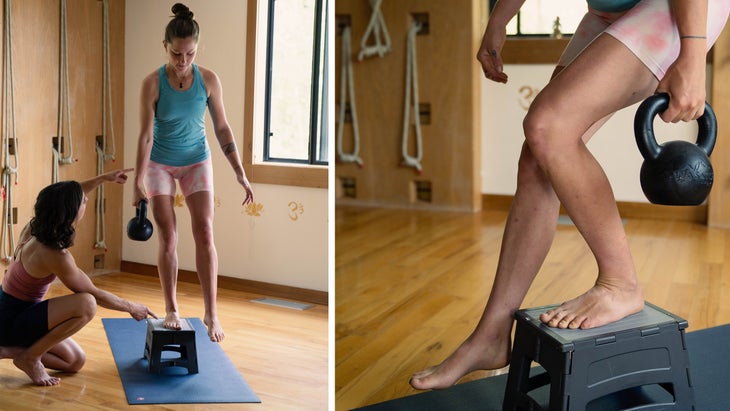
Single-Leg Squat on Box or Step
What information technology does: Builds strength and power by improving the integrity of your arches and alignment, and challenges your unmarried-leg squat control and depth.
How to do information technology: You lot'll need a footstep and a kettlebell or free weight for this move. Stand with ane foot on the pace, knee bent, and the other foot dangling in mid-air in front of you. Your continuing human foot should exist apartment, with corrected arch position. Agree the weight plumb under your shoulder and next to your hip on your standing-leg side. Agree your shoulders secure and your trunk upright. Equally you squat, but go equally depression every bit you lot can while maintaining alignment through the hip, human knee, and arch. And then, stay low and pulse deeper with each repetition. Use your free fingertips against a wall for balance if needed. Cull a weight that allows you lot to perform six to eight repetitions without sacrificing your course. Good grade is the priority, and you should feel this in the deep hip rotators, glutes, and hamstrings less than in your quads. Finish if you have any hurting.
Volume: Two to v sets of half-dozen to eight repetitions, with two minutes of rest in between.
How To Repair Fallen Arches,
Source: https://www.outsideonline.com/health/training-performance/fallen-arches-overpronation-workout-moves/
Posted by: mooretheut1949.blogspot.com

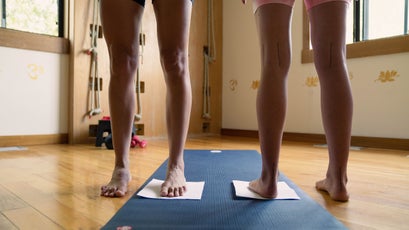
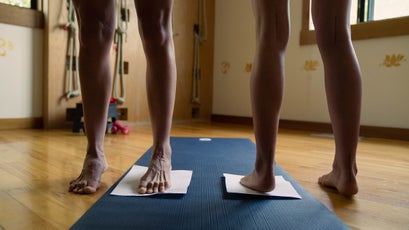
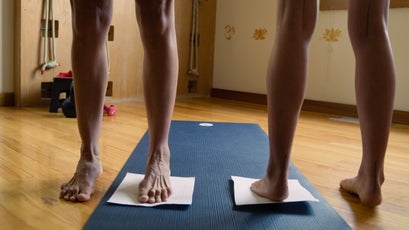
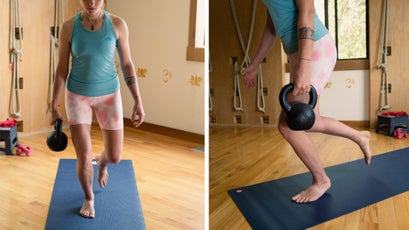
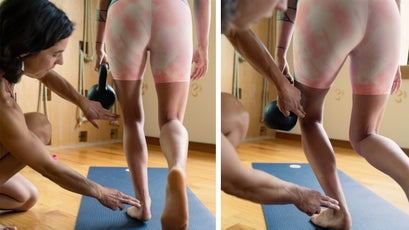

0 Response to "How To Repair Fallen Arches"
Post a Comment